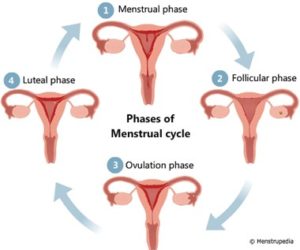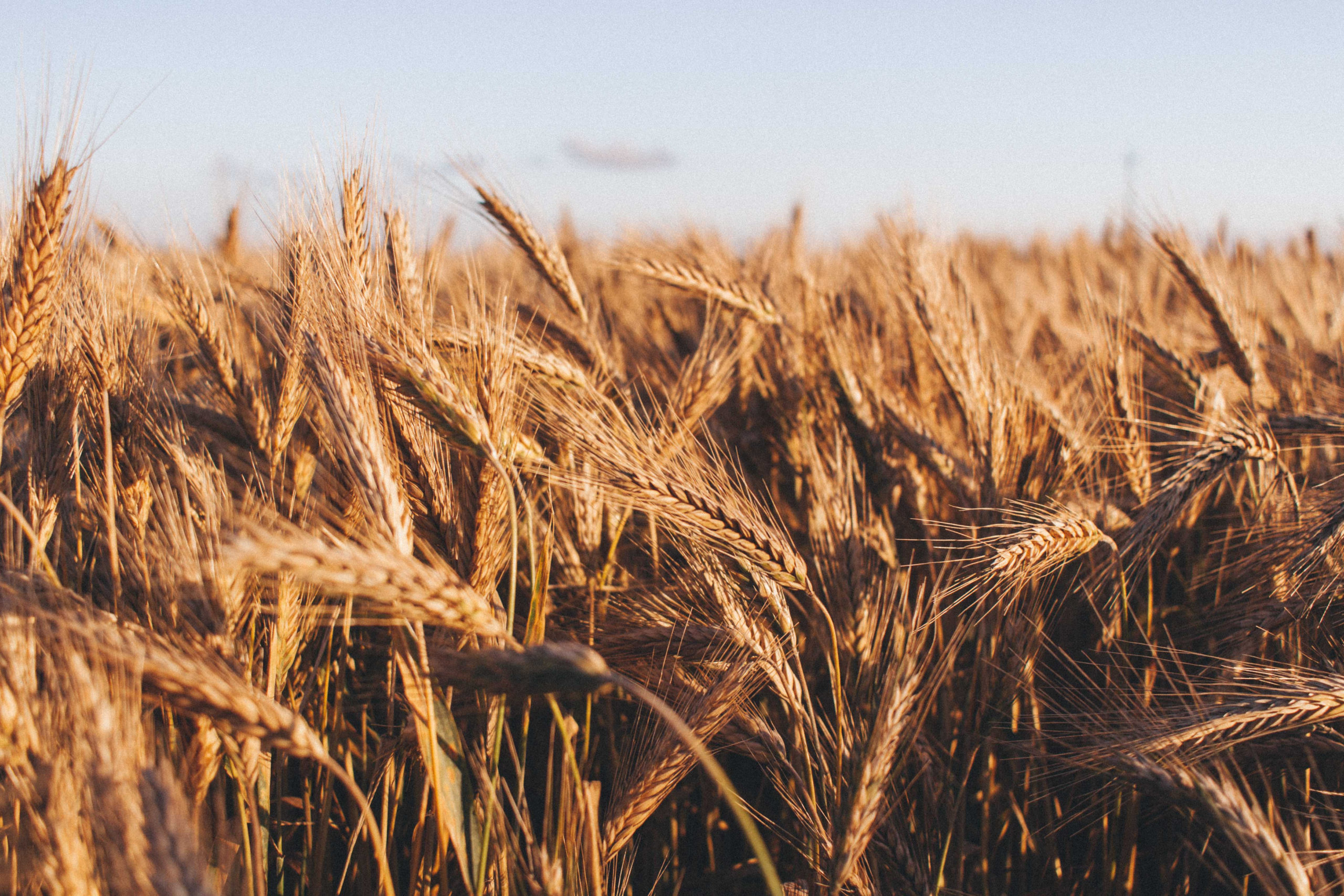Polycystic ovary syndrome, known as PCOS, is one of the most common hormonal disorders in females. Prevalence of PCOS ranges from 3% to 26% in adult women and around 8% in adolescent females, per 2003 Rotterdam Criteria.
When left unmanaged, PCOS can interfere with ovulation, causing missed menstrual periods (termed as amenorrhea). PCOS can also lead to infertility.
Did you know that diet can support individuals with PCOS? Reversing insulin resistance and regulating blood sugar levels are key goals for dietary maintenance of PCOS.
For those with PCOS, a diet rich in fiber (we recommend at least 30 grams daily) helps to prevent recirculation of hormones by making sure they are eliminated through daily bowel movements. Seeds are a great source of fiber!
Seed Cycling 101
What is seed cycling? Seed cycling refers to the consumption of specific seeds at different times of the month in order to improve the production and levels of sex hormones, specifically estrogen, progesterone, and testosterone.
Seed cycling divides the female menstrual cycle into two parts:
- During the first half of the menstrual cycle, or days 1 through 14, seed cycling encourages daily consumption of flax and pumpkin seeds.
- During the second half of the menstrual cycle, or days 15 through 28, seed cycling encourages daily consumption of sunflower and sesame seeds.
Before learning more about seed cycling, let’s take a deeper dive into the female menstrual cycle, which is often referred to as the fifth vital sign!
The Four Stages of Female Menstrual Cycle
An individual’s first period is referred to as menarche, or when one first menstruates. After menarche, it generally takes one to three years for period regularity to stabilize.
The female menstrual cycle typically lasts between 21 and 35 days and on average is 28 days. The menstrual cycle consists of four phases:
- Menstrual phase (days 1 through 5),
- Follicular phase (days 1 through 13),
- Ovulation phase (day 14), and
- Luteal phase (days 15 through 28).

Menstrual Phase
The menstrual phase begins on the day your period starts. This phase represents the time during which you menstruate, or when you bleed, and generally can last anywhere from 2 to 8 days.
When conception has not taken place, estrogen and progesterone levels decrease and the thickened uterine lining sheds through the vagina. During this time, individuals may experience cramping, tender breasts, bloating, mood swings, irritability, aches, and fatigue.
Follicular Phase
The follicular phase starts on the first your period, same as the menstrual phase, yet ends at the beginning of the ovulation phase.
This phase starts when the pituitary gland in the brain releases follicle-stimulating hormone. In response, the ovaries produce up to 20 tiny sacs called follicles. Though each follicle has an immature egg, most often, only 1 egg matures. This follicle with the mature egg will drive an increase in estrogen level, which causes the uterine lining to thicken with blood vessels and soft tissue.
Ovulation Phase
You may know this as the phase when you are able to conceive a pregnancy! Conception can occur up to five days before ovulation and on the day of ovulation.
The ovulation phase occurs when the mature egg is released from the ovary into the fallopian tube. During this phase, increased estrogen levels trigger the production of luteinizing hormone, which causes this release of the mature egg.
The Luteal Phase
Last but not least, the luteal phase takes place during the second half of the menstrual cycle.
If conception does occur, progesterone and estrogen levels increase, which allow for the thickening of the uterine lining.
If conception does not occur, progesterone and estrogen levels decrease, at which point your body prepares itself for menstruation. Before the menstrual cycle starts again, individuals may experience premenstrual syndrome (PMS) symptoms. PMS symptoms include cramping, tender breasts, bloating, mood swings, food cravings, weight gain, aches, and trouble sleeping.
The Benefits of Seed Cycling
Seed cycling features the consumption of flax, pumpkin, sunflower, and sesame seeds. So, how do these seeds support our bodies throughout the menstrual cycle?
Benefits of Flaxseeds
- Flaxseeds are a great source of dietary fiber, lignans, and alpha-linolenic acid (ALA).
- Lignans are a plant-based compound which mimics estrogen in the body and promotes anti-diabetic and hypoglycemic effects. Lignans help to balance estrogen levels during the follicular and luteal phases of the menstrual cycle.
- Alpha-linolenic acid, the most common omega-3 fatty acid, suppresses appetite and helps in reducing body mass index (BMI) status. This means that flaxseed consumption creates a longer feeling of fullness, which plays a role in BMI and weight reduction.
- Flaxseed intake has been found to improve cycle length and to reduce breast pain.
Benefits of Pumpkin Seeds
- Pumpkin seeds are rich in of omega-3 fatty acids and zinc.
- Zinc balances estrogen, progesterone, and testosterone levels in the body.
- Pumpkin seed oil is high in vitamin E. Vitamin E intake promotes progesterone production and exerts antioxidant effects.
- Both zinc and vitamin E intake are generally regarded in scientific literature as necessary components in good reproductive health.
Benefits of Sunflower Seeds
- Sunflower seeds are a great source of vitamin E and selenium.
- Selenium works to remove excess estrogen quantities in the body.
Benefits of Sesame Seeds
- Sesame seeds are high in dietary fiber, lignans, and protein and contain the B vitamins, copper, manganese, calcium, and magnesium.
- Sesame seed extract helps to regulate blood glucose level and to promote weight loss.
Generally, menstruating females produce adequate levels of hormones and experience normal menstrual cycles. However, weight status and other health conditions, like PCOS and hypothyroidism, can lead to an imbalance of these hormones and cause abnormal menstrual cycles. As such, menstruating females may choose to seed cycle in order to:
- Support hormonal balance,
- Alleviate PMS symptoms,
- Decrease hormonal acne,
- Alter irregularity of menstrual cycles, and
- Fight stomach bloating and fatigue.
Results from seed cycling will not happen overnight! Menstruating females observe improvements after approximately three months of seed cycling adherence.
Seed Cycling to Support Your PCOS Diagnosis
A systematic review published in 2021 highlights the impact that seed cycling can have as an intervention in the treatment of PCOS.
- Daily flaxseed consumption can lower testosterone by up to 80% in females with PCOS.
- Sesame seed oil has also been shown to inhibit testosterone production.
- Flaxseeds have been shown to increase quality in life in those with PCOS.
- Pumpkin seeds contain beta-sitosterol, a plant sterol, which can remove excess androgens. Beta-sitosterol can also treat unpleasant PCOS symptoms, such as excessive hair growth, acne, and weight gain.
- Sesame seeds may play a role in the management of lipid imbalance, cardiovascular disease, and bone resorption, all of which are classified as late complications of PCOS.
The findings captured within this review highlights the importance that dietary intervention of seeds at different stages of menstrual cycle can play in supporting hormonal balance, alleviating PCOS symptoms, and reducing body weight status.
Why is this important? Balanced hormones in those with PCOS greatly improve the chances for weight loss. Weight loss with PCOS is beneficial for preventing obesity and further metabolic comorbidities, such as insulin resistance, dyslipidemia, impaired glucose tolerance, type 2 diabetes mellitus, hypertension, and cardiovascular disease.
Note: Seed cycling is not a cure for abnormal periods or menstrual cycles or for PCOS. If you are experiencing abnormal periods or menstrual cycles or if you believe you may have PCOS, it is recommended that you consult with your gynecologist.
Sources
- Deans R. Polycystic Ovary Syndrome in Adolescence. Medical Sciences. 2019; 7(10):101. https://doi.org/10.3390/medsci7100101
- Mizgier M, Jarząbek-Bielecka G, Opydo-Szymaczek J, Wendland N, Więckowska B, Kędzia W. Risk Factors of Overweight and Obesity Related to Diet and Disordered Eating Attitudes in Adolescent Girls with Clinical Features of Polycystic Ovary Syndrome. J Clin Med. 2020;9(9):3041. Published 2020 Sep 21. doi:10.3390/jcm9093041
- Dennelt C. PCOS: Diet’s Role in this Women’s Health Threat: Dietary strategies can help manage this underdiagnosed condition that affects both reproductive and metabolic health.(polycystic ovarian syndrome). Environmental nutrition. 2018;41:6.
- https://www.healthline.com/health/womens-health/stages-of-menstrual-cycle
- Aslam M, Shauket R, Yousaf Z, Tehzeeb K. Nutraceutical Intervention of Seeds in the Treatment of Poly Cystic Ovarian Syndrome; A Systematic Review. Pakistan BioMedical Journal. 2021;4(2). doi:10.54393/pbmj.v4i2.100.
- Haidari F, Banaei-Jahromi N, Zakerkish M, Ahmadi K. The effects of flaxseed supplementation on metabolic status in women with polycystic ovary syndrome: a randomized open-labeled controlled clinical trial. Nutr J. 2020;19(1):8. Published 2020 Jan 24. doi:10.1186/s12937-020-0524-5
- Rodríguez-García C, Sánchez-Quesada C, Toledo E, Delgado-Rodríguez M, Gaforio JJ. Naturally Lignan-Rich Foods: A Dietary Tool for Health Promotion? Molecules. 2019;24(5):917. Published 2019 Mar 6. doi:10.3390/molecules24050917
Written and contributed by Dietetic Intern Erin Funderlich



